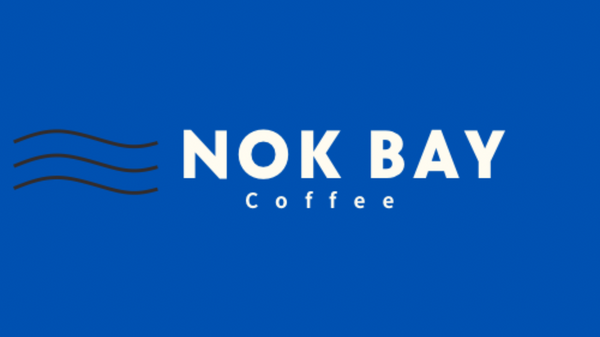
Indonesian Mandheling Coffee
Share
Mandheling coffee beans
Mandheling is one of the most representative coffee beans in Indonesia. It is famous for its low acidity, mellow taste and unique herbal and woody tones, and is deeply loved in the Asian market. The following is a comprehensive analysis of the historical origins, terroir of the production area, processing technology, flavor characteristics and market status:
1. Historical Origin and Origin of the Name
1. A name born out of misunderstanding
Mandheling is not the name of a production area or variety, but originated from a language misunderstanding during World War II. At that time, a Japanese officer drank coffee with a unique flavor in an Indonesian coffee shop. When he asked the name of the coffee, the owner misunderstood it as asking about his ethnicity and replied " Mandheling ". After the war, the officer introduced this coffee to Japan, where it became very popular. Since then, "Mandheling" has become synonymous with Indonesian coffee.
2. Cultural Communication
Mandheling has become internationalized due to its popularity in the Japanese market. Its rich flavor has also become a classic choice for black coffee lovers, especially in Taiwan and Japan, where it is regarded as an "entry-level black coffee."
2. Core production areas and terroir conditions
Mandheling is mainly produced in Sumatra, Indonesia , and is divided into two core areas:
1. Lake Toba and surrounding areas
-Lintong : A traditional Mandheling wine region, it is wet-planed and has earthy, woody and dark chocolate notes.
-Altitude : 1000 – 1500 meters, fertile volcanic soil, tropical rainforest climate providing ample rainfall.
2. Around Lake Tawar
-Gayo Mountains, Aceh : An emerging boutique producing area with shade-grown and semi-washed processing, brighter acidity with caramel and stone fruit sweetness.
3. Varieties and processing technology
1. Main varieties
-Typica Hybrid : A native variety from Sumatra, it has smaller beans, weaker disease resistance but richer flavor.
- Tim Tim ( HDT ): A natural hybrid of Arabica and Robusta, it combines disease resistance with complex flavor.
2. Signature processing method: Wet Hulling
-process :
1. Remove the peel and pulp and ferment briefly;
2. Preliminary drying to a moisture content of 30-50 % before peeling off the inner pericarp ;
3. Secondary drying to 12 – 13% moisture content.
- Features: Due to the accelerated processing in a high humidity environment, the beans are given cracks (sheep's trotter beans), the flavor is low in acidity and has herbal and woody tones, but the defect rate is relatively high.
IV. Grading and Classification
1. Grading Standards
-Grading based on the number of defects per 300 g of green beans: G1 ( 0 – 3 defects) to G5 ( 46 – 90 defects).
- Golden Mandheling : After four rounds of manual screening, defective beans are removed, the beans are uniform and the flavor is pure. Only products produced by Indonesia's PWN company can be named Golden Mandheling.
2. Common types
-Traditional Mandheling: Produced in Lake Toba, wet-planed, rich in flavor with herbal notes.
- Aged Mandheling: The green beans are stored for 3-5 years , the mellowness is improved and the acidity is almost gone .
5. Flavor Characteristics and Brewing Suggestions
1. Flavor characteristics
-Main notes: Low acidity, mellow taste with dark chocolate, caramel, cedar and herbal aromas.
- Layers of change: Excellent roasting can create cedar, dried fruit or smoky flavors, with a licorice or burnt grass jelly flavor in the aftertaste.
2. Brewing and roasting suggestions
- Roasting degree: Medium-dark roasting is mainly used to enhance the mellowness and sweetness; light roasting can retain the delicate fruit acidity.
-Brewing method:
-Hand pour-over (water temperature 88 – 92 ° C ) highlights the layers;
-Italian espresso paired with milk to balance the bittersweetness.
6. Market Status and Recommended Brands
1. Market positioning
-Commercial beans: They account for the majority of Indonesia's production and are mostly used for instant coffee or Italian blends.
- Trend towards high-quality products: Micro-batch beans from Golden Mandheling and Jiayou are recognized by international competitions and can cost hundreds of dollars per kilogram.
VII. Challenges and Controversies
1. Uneven quality: The high defect rate of wet planing requires manual screening, which is costly.
3. Market counterfeiting: The name "Mandheling" is misused in blended beans from non-origin regions. The origin and processing method labels must be clearly identified.
From historical misunderstanding to flavor legend, Mandheling coffee showcases Indonesia's unique terroir and craftsmanship. Its mellow and low-acid characteristics, whether it is the herbal flavor of traditional wet hulling or the pure sweetness of Golden Mandheling, are all worthy of careful tasting by coffee lovers. When purchasing, it is recommended to give priority to fine beans with marked production areas and processing methods, so as to experience the deep flavor of Sumatra's volcanic soil and tropical rainforest. ☕️ .
Coffee beans product details: https://is.gd/Pib179
(Click the link for screenshots)
There are also discounts on Italian blended beans and drip ear beans
Free shipping on online purchases for a limited time
Online store: www.nokbay.com
FB / IG : Nokbay coffee
WhatsApp : 9845 1173
#精品咖啡豆#手灌咖啡豆#限量上#爆味#nokbaycoffee #CoffeeOrigins #拖耳包#冷抽咖啡#意式咖啡#印尼咖啡豆
